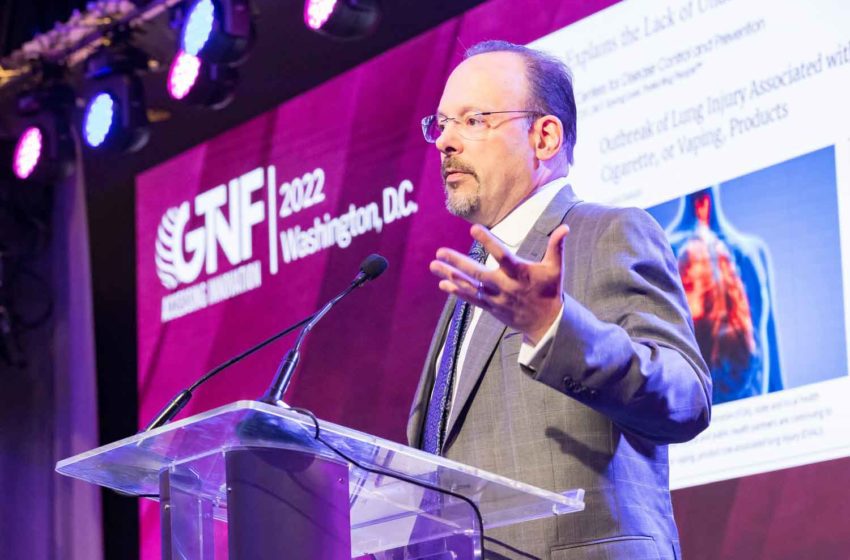 Flavors other than tobacco will not be allowed on the U.S. market. In order for that to happen, a manufacturer would need to show the U.S. Food and Drug Administration that flavors other than tobacco are appropriate for the protection of public health (APPH), and that may be more complicated than once thought. This was the opinion of Christopher Russell, director at Russell Burnett Research and Consultancy.
Flavors other than tobacco will not be allowed on the U.S. market. In order for that to happen, a manufacturer would need to show the U.S. Food and Drug Administration that flavors other than tobacco are appropriate for the protection of public health (APPH), and that may be more complicated than once thought. This was the opinion of Christopher Russell, director at Russell Burnett Research and Consultancy.
Presenting at the GTNF 2022 in Washington, D.C., Russell described the regulatory rationale and features of several types of research studies that can be conducted to compare the efficacy of flavored electronic nicotine-delivery system (ENDS) products versus tobacco-flavored ENDS products for facilitating switching and reducing cigarette consumption among adult smokers.
For a premarket tobacco product application, the FDA requires a range of valid scientific data and other research information to determine whether permitting the marketing of the new tobacco product qualifies as APPH. However, Russell explains, the Food, Drugs and Cosmetics (FD&C) Act, which guides the FDA’s authority, doesn’t clearly define APPH.
“Instead, to determine whether a new tobacco product meets the APPH standard, Section 910 of the FD&C Act requires FDA to, among other things, weigh the risks and benefits of the new tobacco product to the population as a whole, including users and nonusers of tobacco products, and taking into account both the likelihood that existing tobacco users will stop using such products if the new product is marketed and the likelihood that individuals who do not currently use tobacco products will start to use tobacco products if the new product is marketed,” Russell said.
To consider the marketing of a new tobacco product to be APPH, the FDA states that a PMTA must contain sufficient valid scientific information that demonstrates that the new tobacco product significantly reduces harm or the risk of tobacco-related diseases to individual tobacco users. Additionally, allowing adults access to ENDS and other noncombustible tobacco products cannot come at the expense of addicting a new generation of children and teenagers to nicotine.
“Though the FDA has sought to strike a balance in recent years between reducing youth appeal and access to ENDS on one hand while maintaining opportunities for addicted adult smokers to access ENDS on the other hand, the FDA’s current position expressed most recently in the issuance of marketing denial orders (MDOs) for flavored ENDS products is that the evidence available to FDA is clear in showing that the appeal and the likelihood of use of flavored ENDS by youth harms the public health to a level that is not outweighed by the health benefits of adult smokers switching to ENDS products,” said Russell. “In fact, flavored ENDS do not confer any incremental benefits over and above tobacco-flavored ENDS.”
The FDA has indicated that it may require a randomized controlled trial (RCT) and or a longitudinal cohort study (LCS) that demonstrates the benefit of an applicant’s flavored products help adult smokers more than they entice youth to start vaping. The FDA said it would also consider data that showed the same results through other research routes.
An RCT uses control factors not under direct experimental control. Examples of RCTs are clinical trials that compare the effects of drugs, surgical techniques, medical devices, diagnostic procedures or other medical treatments, according to Russell. An LCS is a research study that follows large groups of people over a long time. The groups are alike in many ways but differ by a certain characteristic (for example, vapers who use flavors other than tobacco, those who vape tobacco and those who smoke combustible cigarettes).
“I think FDA is—without being explicit—they are strongly communicating that an RCT or a longitudinal cohort study would provide the strongest evidence of an added benefit of a flavored ENDS product and that any application for a flavored ENDS product that does not contain one of those two studies or both of those studies will leave FDA in a position where they cannot possibly be confident that the potential benefits of the flavored ENDS would outweigh or overcome the risks to youth or would exceed the benefits of a comparable tobacco-flavored product,” said Russell. “I cannot see any circumstance in which flavored ENDS products will receive marketing authorization without having provided FDA with reliable and robust evidence from at least one of these two study designs. RCT is the gold standard in interventional research, and longitudinal cohort studies [are] the gold standard in observational research.”





